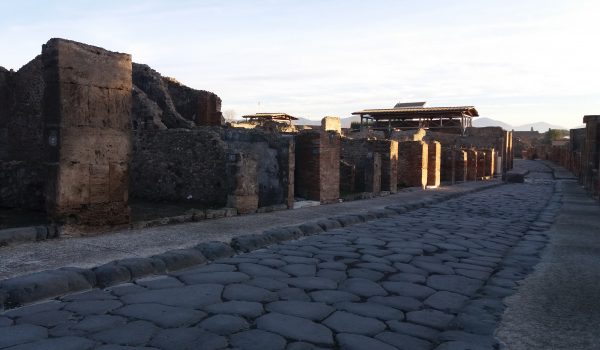Even though the digging carried out in the first decades of the XIX century erased the better part of the distinguishing features of these shops, making the identification of their specific function almost impossible, the investigations carried out at no. 1 uncovered a thermopolium. This shop consisted of two different spaces. The one overlooking the main street had a floor made of lime mortar and a counter mad of perishable materials with embedded dolia (jars or vessels). The space at the rear of the building was probably used as a kitchen and was perhaps provided with a latrine in a space under the staircase.
The 62 A.D. earthquake hit this area quite severely and some of the rooms in the upper floor were affected by the outbreak of a small fire, the traces of which remain in the stratifications on the ground floor. Following the damage, it was necessary to carry out a series of restoration works, which can be identified in the repairing of some wall sections and the reconstruction of the floor at ground level.
The restoration of rooms was sometimes accompanied by a change in their use, as happened in the shop at no. 1, which was probably transformed into a caupona.


